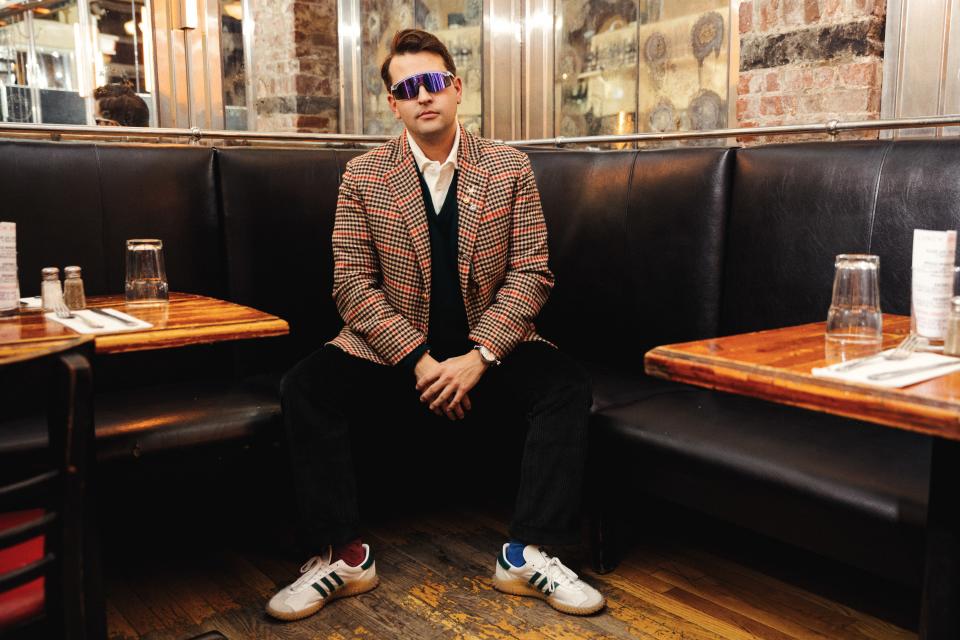Rowing Blazers Is Proving That the Prep Revival Is Just Getting Started
One day, fashion scribes on Mars wearing robo-Yamamoto-designed space suits will wonder why prep didn’t die for good in 2018, nailed into its coffin by Donald Trump, Steve Bannon’s triple-stacked polo shirts, and white people in general. Preppy clothing should have reached its apogee with the #menswear movement, when men embraced pleated trousers, 3-roll-2 sport coats, and penny loafers. But as soon as “Ivy Style” began to feel like costume again, prep only got stronger by ditching the tie and adapting to the current youth-led streetwear moment. Noah proved that blending the fun aspects of preppy clothing (bright colors, sporty fabrics, cool logos) with skate and punk influences could earn an embrace from the fashion set. The Gucci loafer—once the “deal sleds” of ’80s finance hardos—became the hottest haute footwear of the decade thanks to Guccified celebs like A$AP Rocky. Ralph Lauren’s cuddly Polo bear learned how to heelflip via a collaboration with skate brand Palace that disappeared in approximately two milliseconds. The ultimate sign of traditional prep’s waning influence—and its potential for youthful rejuvenation? When Kith collaborated with Tommy Hilfiger, it felt like the former was doing the latter a favor.
But nowhere is prep’s rejuvenation more apparent than at the Rowing Blazers store, located just off SoHo’s Clout Corridor at 161 Grand Street. It's a glass box that looks like it was merchandised by Vampire Weekend circa 2008 and left untouched since. Originally it was meant as a temporary pop-up, but Rowing Blazers’ pennant flag will likely remain planted there through 2019, and possibly through 2020 as well. Though the racks of piped blazers and cross-sash polos (meant for playing actual polo) wouldn’t be out of place in the uptown mansions of traditional retail, the framed Babar cartoons on the walls and copies of the I-Hate-Preppies Handbook suggest a sense of humor typically absent from the genre. As do the graphic tees that spell ROWING BLAZERS in Cyrillic (a sendup of Gosha Rubchinskiy), vintage rugby shirts that say LEHMAN BROTHERS across the front, and yellow dad caps that read FINANCE on display. On any given day, customers might include blue-blooded Upper East Siders with the Sunday Times folded into their Barbour jackets—and kids wearing tiny beanies, Supreme shopping bags in tow.
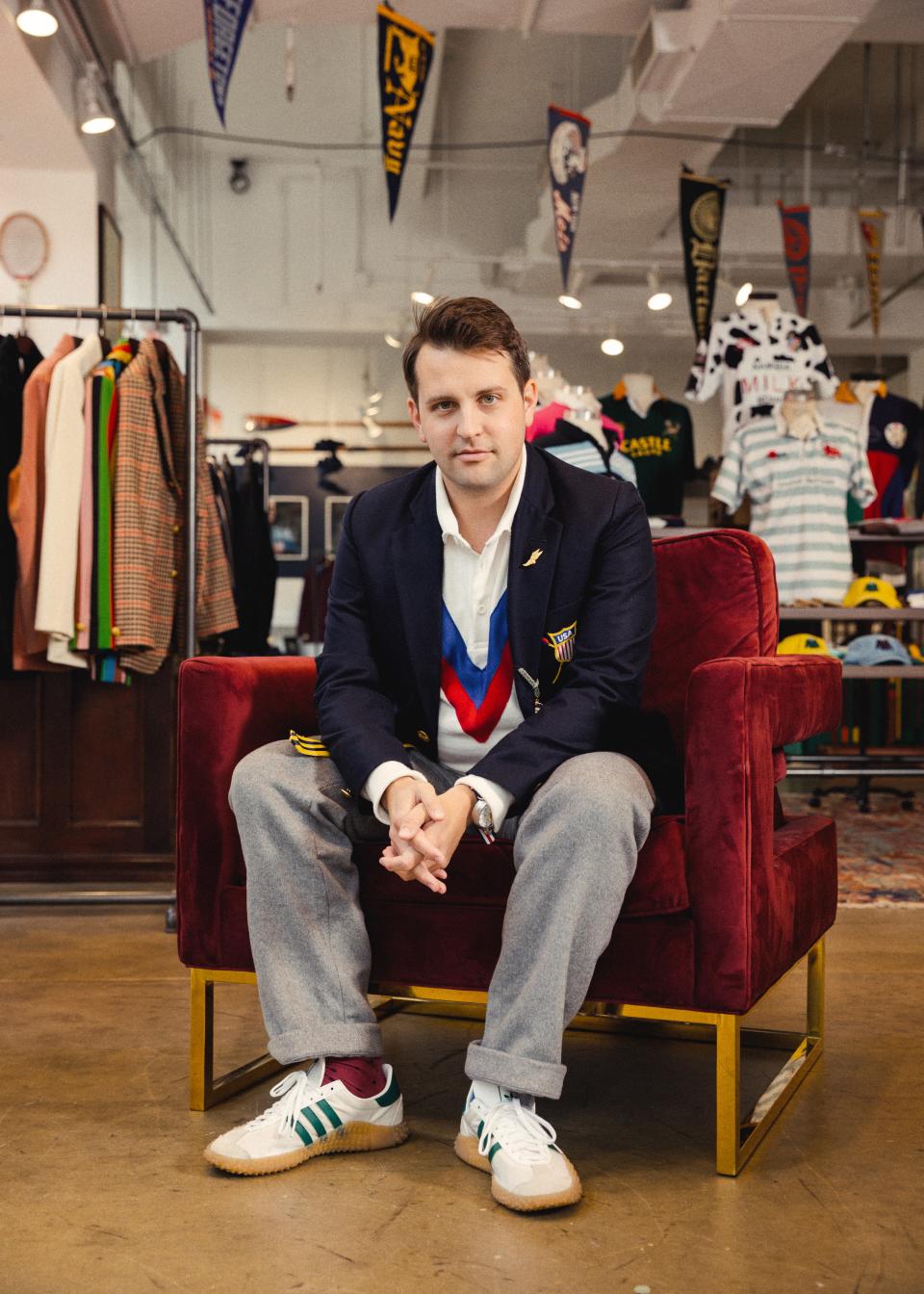
Though the brand unironically refers to the store as a “clubhouse,” the codes on display are fully up for grabs. “A lot of people see what they want to see in the brand,” says Jack Carlson, founder and designer of Rowing Blazers. “Some people think of it as a streetwear brand—I mean, I don’t, but some people do.” Timothée Chalamet, for one, is fond of mixing the brand’s rugby shirts and collegiate-font-logo tees with bomber jackets and scuffed designer sneakers, like he’s breaking boarding-school dress code and is on his way to detention.
Many more can be forgiven for thinking of Rowing Blazers as Easter Sunday–brunch-at-the-country-club-wear. But Carlson bristles at that take, too. “When we first launched, everything that was written about us was like ‘Preppy McPrepperson, the preppiest brand ever, was launched by Preppy Jack Carlson…’ ” says Carlson, who adds that he doesn’t regret the literalism of the brand’s name. To its credit, Rowing Blazers speaks the language of streetwear. Nearly every month brings a new collaboration, with the likes of Noah, Eric Emanuel, Luke Edward Hall, and—naturally—Harvard’s Hasty Pudding Club. Drops happen on Thursdays at hypebeast o’clock (11:00 a.m. EST). The brand’s campaigns feature a multiracial cast, Olympic rowers fooling around next to Ghanian-American artists. “We’re trying to take some of the best practices from the streetwear world and think, how do you apply that to tweed blazers?” says Carlson. “We end up doing product drop pretty much every week, and some of those things are truly limited edition.” The rest of the goods are often sold out anyway. “We can’t make enough rugby shirts to keep up,” says Carlson.
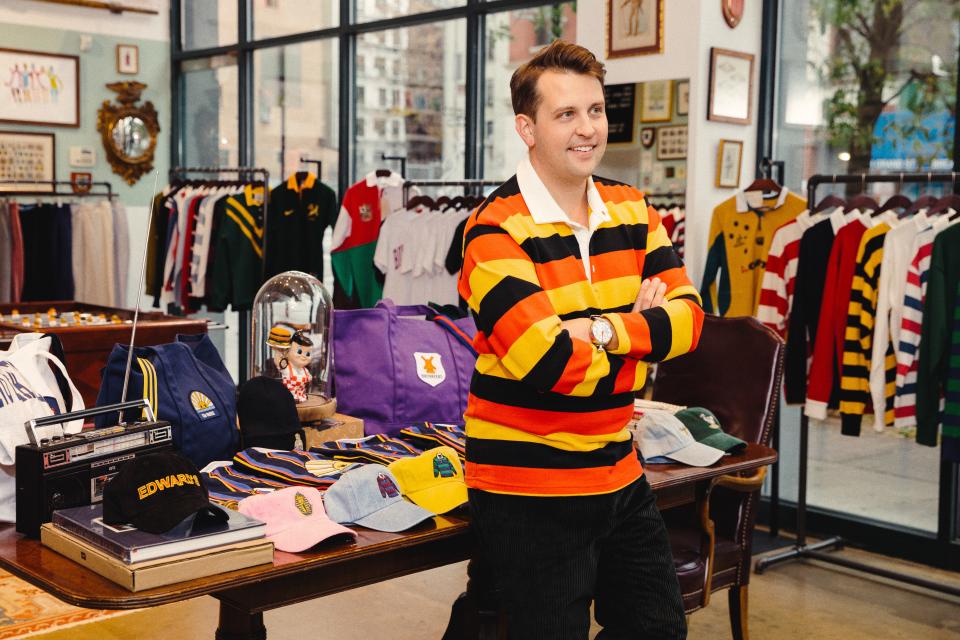
The blazers are still made in New York’s Garment District, and Carlson, though he has an eight-person team, still personally procures fabric and trim for every blazer run. Though he’s working to shore up the availability of popular products, he isn’t in a hurry to scale up or ink deals with the massive wholesalers who have come calling. When J.Crew wanted Rowing Blazers in every store, Carlson asked for their collaborative line of rugby shirts to be limited edition and only sold online and in the Liquor Store in Tribeca. This is just how you run any fashion line in 2018, whether you’re making critter pants or logo hoodies: “I’m thinking the whole time I’m talking to these people: Would Supreme do that?” Carlson says.
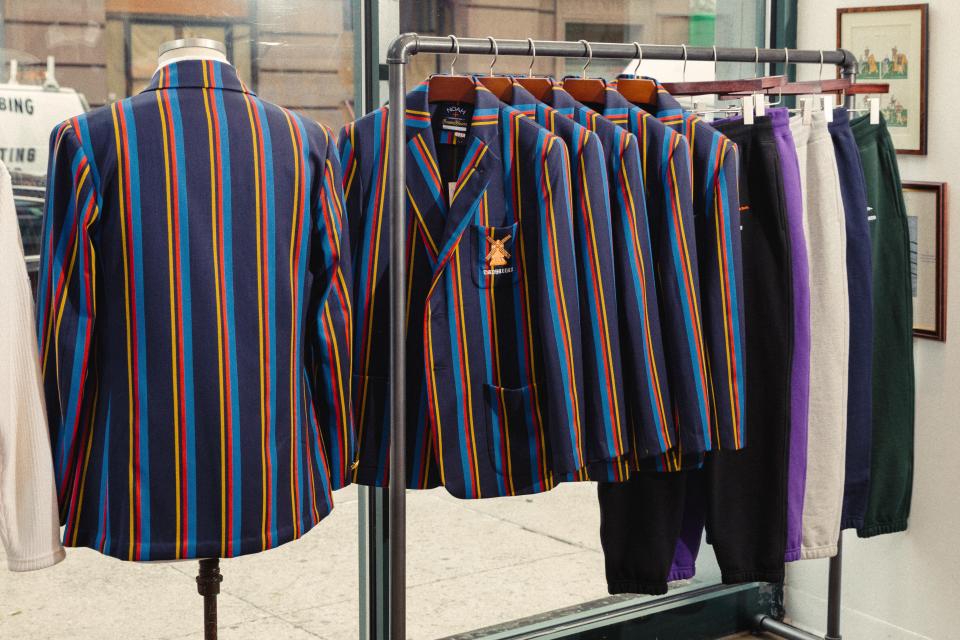
One morning earlier this year, Carlson was walking through SoHo to his de facto office, a booth at Tribeca bistro Edward’s. Along the way, he did what anyone south of Delancey Street does when they have a band, cause, or budding clothing label to promote: He slapped a sticker on a light post. Carlson often carries these stickers in his bag. They resemble the ubiquitous red box-logo stickers that (still!) plaster bar bathrooms and mailboxes across downtown New York, but the Futura bold italic font is replaced by a twee gothic one, the red background by Black Watch plaid. Unfortunately for Carlson, his minor act of subversion occurred right in front of two cops, who promptly wrote him a ticket. “I mean, I put a sticker on a post that was covered in stickers. I wouldn’t call that graffiti,” he recalls telling New York’s finest. “Anyway, I had to go to court.” Carlson, somewhat unsurprisingly, got off, and promptly released a graphic T-shirt that features a photo of a traffic cop seemingly bemused by a stack of 11 Rowing Blazers stickers on a roughed-up mailbox.
Carlson is an unlikely entrant in the N.Y.C. men’s fashion scene, precisely because he does have an uber-prep résumé. When we meet for breakfast at The Odeon, he is wearing a Tintin sweatshirt, Noah x Rowing Blazers sweatpants, and Sperry sneakers from a forthcoming collab. Thirty-one years old, he has the slight build of a former coxswain and a boyish laugh—a quick ha-ha—like he’s just told a dirty joke in the steam room at the Racquet Club. Carlson attended Georgetown and then Oxford, where he got a Ph.D. in archaeology while racing for the university’s storied boat club. He did three stints on the U.S. national rowing team, coxing a boat to a bronze-medal finish at the 2015 world championships.
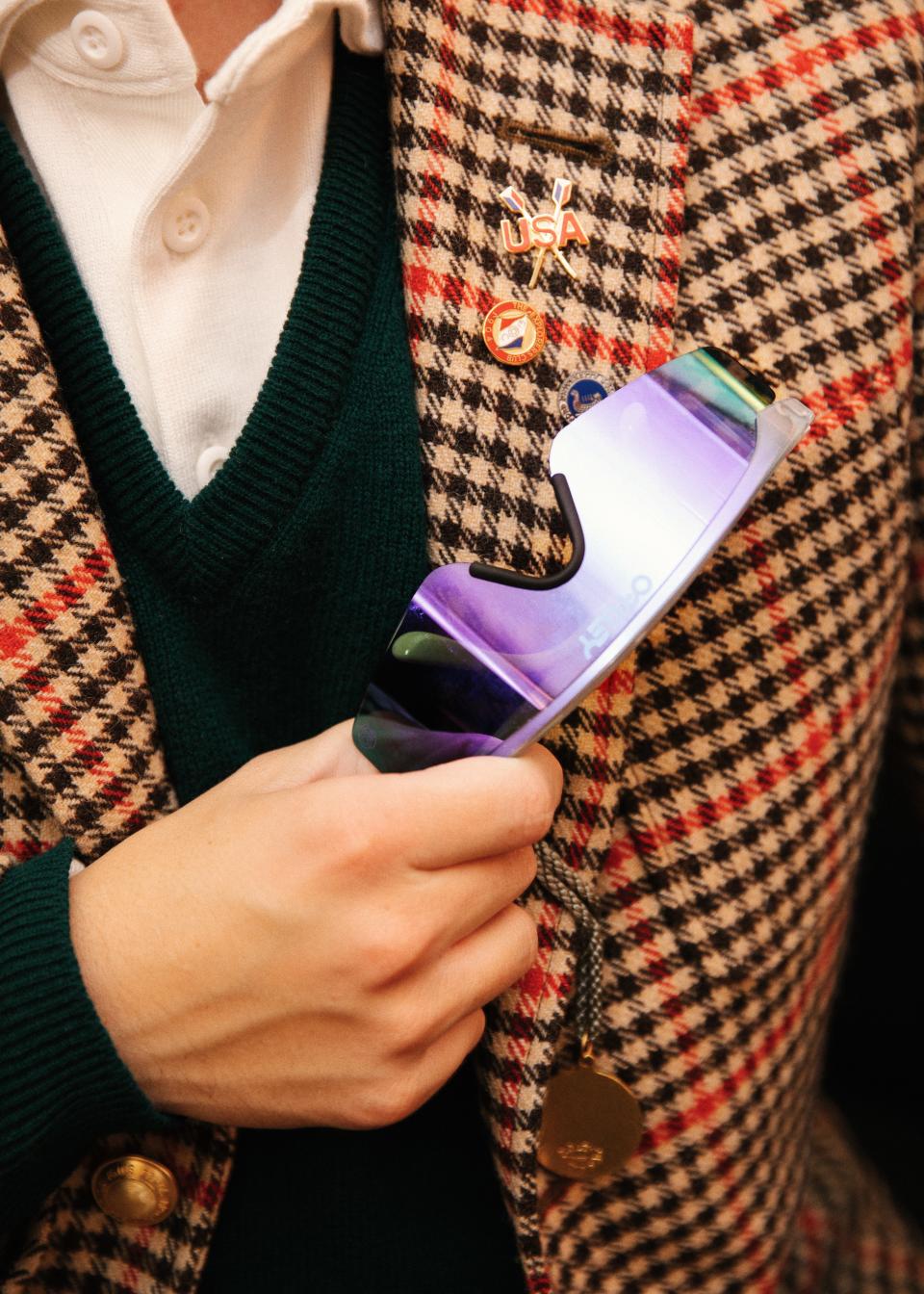
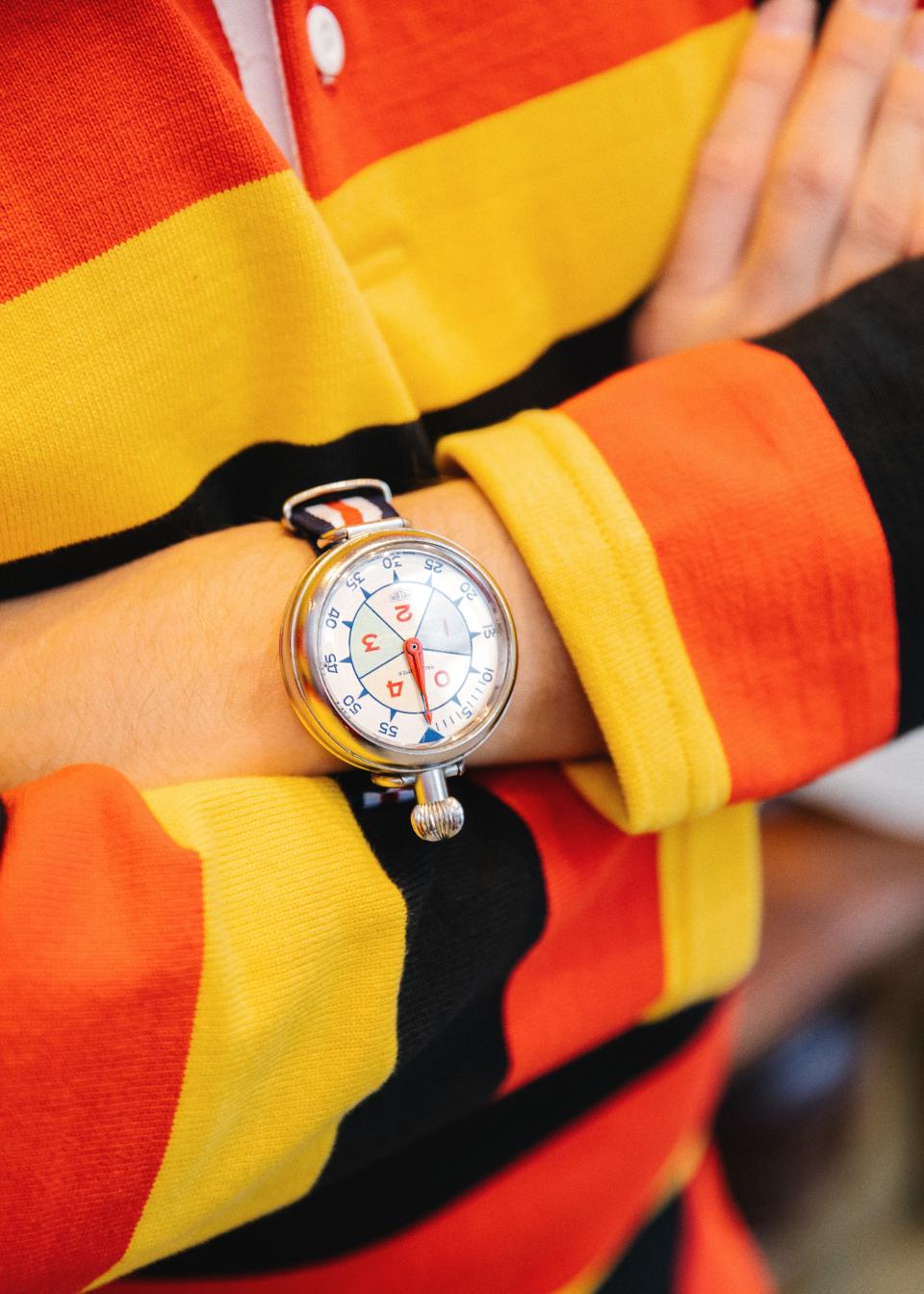
Before Rowing Blazers was a brand, it was Rowing Blazers: a book celebrating the clubby attire of crews in Europe and on the East Coast that Carlson wrote while at Oxford. (Full disclosure: My roommate, brother, many friends, and a few enemies were collegiate rowers.) The modern blazer actually evolved from the flannel jackets crews of old wore on the water; the blazers eventually became strictly après-row attire, but the bright colors (to establish which boat was which) and the arcane traditions associated with the garments remained. The book came out in 2014, a year after the closing of Ralph Lauren’s youthful diffusion line, Rugby, left a pony-sized hole in the menswear world.
At the same time, rowing-blazer manufacturers were going out of business, too. As he was the sport’s newly minted resident sartorial expert, clubs and collegiate crews came to Carlson asking for blazers. It beat coaching rowing at a boarding school, so during off days in his last years of national team training, Carlson perfected a blazer, basing it on vintage designs he had collected over the years. The brand launched in early 2017 with shirts, ties, and jackets; since then sales have quadrupled. Now, private blazer sales to clubs and teams are about 10 percent of the business; 80 percent is direct-to-consumer apparel.
Of course, for every cultural touchstone that gives prep a good name (Annie Hall), there are countless strikes against it (Woody Allen). What’s behind the rejuvenation of the de facto uniform of white privilege and estate-tax loopholes? One way of looking at it is through the proverbial fashion pendulum, which has swung so far toward skating and hip-hop that prep is firmly at the margins of “cool,” ready to be appropriated into fashion’s vast irony matrix. Taken out of its intended context, prep’s crests and shields and alma mater–branded hats are evocative of merch, its stuffiness transformed into fashion’s more benign version of elitism: exclusivity. As Rachel Tashjian writes for Garage, “[Prep] dovetails nicely with the fanaticism for streetwear, which is often cheap, funny, and obsessed with codes that outsiders just don’t understand.” Last year, Rowing Blazers released a capsule collection for the Harriman Cup. (If you know what that is, congrats for getting into Yale.) But, Carlson says, the amount of Harriman Cup gear he moved vastly outweighs the number of people who care about an annual match between the Yale and UVA polo teams. “People who came in to buy it didn’t go to either school,” Carlson says, “but they think it’s cool, and it’s cool because it’s the real thing. Everyone likes something that’s just real.” As much of the fashion world leans back into the world of prep, this might be Carlson’s most significant advantage: Rowing Blazers’ embroidered patch logos and stitched club names are real, not figments of an imagined, aspirational country or collegiate lifestyle.
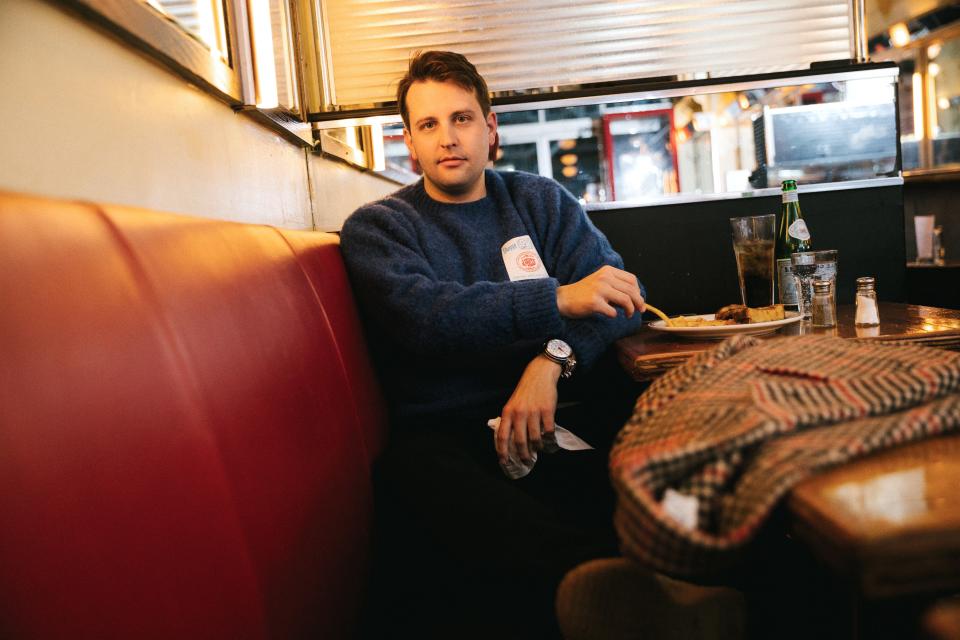
But Ralph Lauren’s upper-crust wonderland is almost a genre unto itself at this point. Thrust into a streetwear context, is wearing a hat emblazoned with the logo of Oxford Brookes college, or a blazer that, until now, was only available to the beefy members of a varsity crew, akin to hanging a Supreme deck in your apartment if you can’t ollie? It is a question Carlson himself has been asking as he crosses clothing’s tribal boundaries. Once, after he released a line of tongue-in-cheek Pierce & Pierce banker bags, an investment banker wrote him a screed accusing him of appropriating M&A culture. More troublingly, an Ivy League rowing coach, furious at the brand’s diverse campaigns, e-mailed Carlson to complain that he was tarnishing the sport’s image. Carlson occasionally goes on furious blocking sprees on Instagram to stop racist comments on the brand’s page. (“It’s so fucked,” he says.) By bringing prep archetypes closer to menswear’s mainstream, he has challenged those who feel like the genre—or the sport of rowing—belongs to them. Even tiny moments that challenge the idea of who prep is for feel like major victories to Carlson. He proudly relays a story from when Rowing Blazers first released rugby shirts last year, and Chicago rapper Vic Mensa was among the customers waiting in line to get into the pop-up space. “That’s when I realized what I wanted was happening,” Carlson says.
Rowing Blazers’ inclusive vision feels more genuine than its diverse lookbooks. The brand’s recent collaboration with Noah, for one, benefitted Row New York, which gets N.Y.C. kids involved in after-school rowing programs. But Rowing Blazers’ premise—that prep is essentially fun and for everyone—doesn’t feel true just yet. Not in annum 2018, when we’re ruled by a political class whose favorite part of the job is the symbols they (and no one else) get to wear and the flags they get to fly. For Rowing Blazers, maybe opening the clubhouse doors to all is just good business. But by turning prep loose in downtown N.Y.C., Carlson has also helped change the rules. If prep won’t die, someone might as well try to save it.
